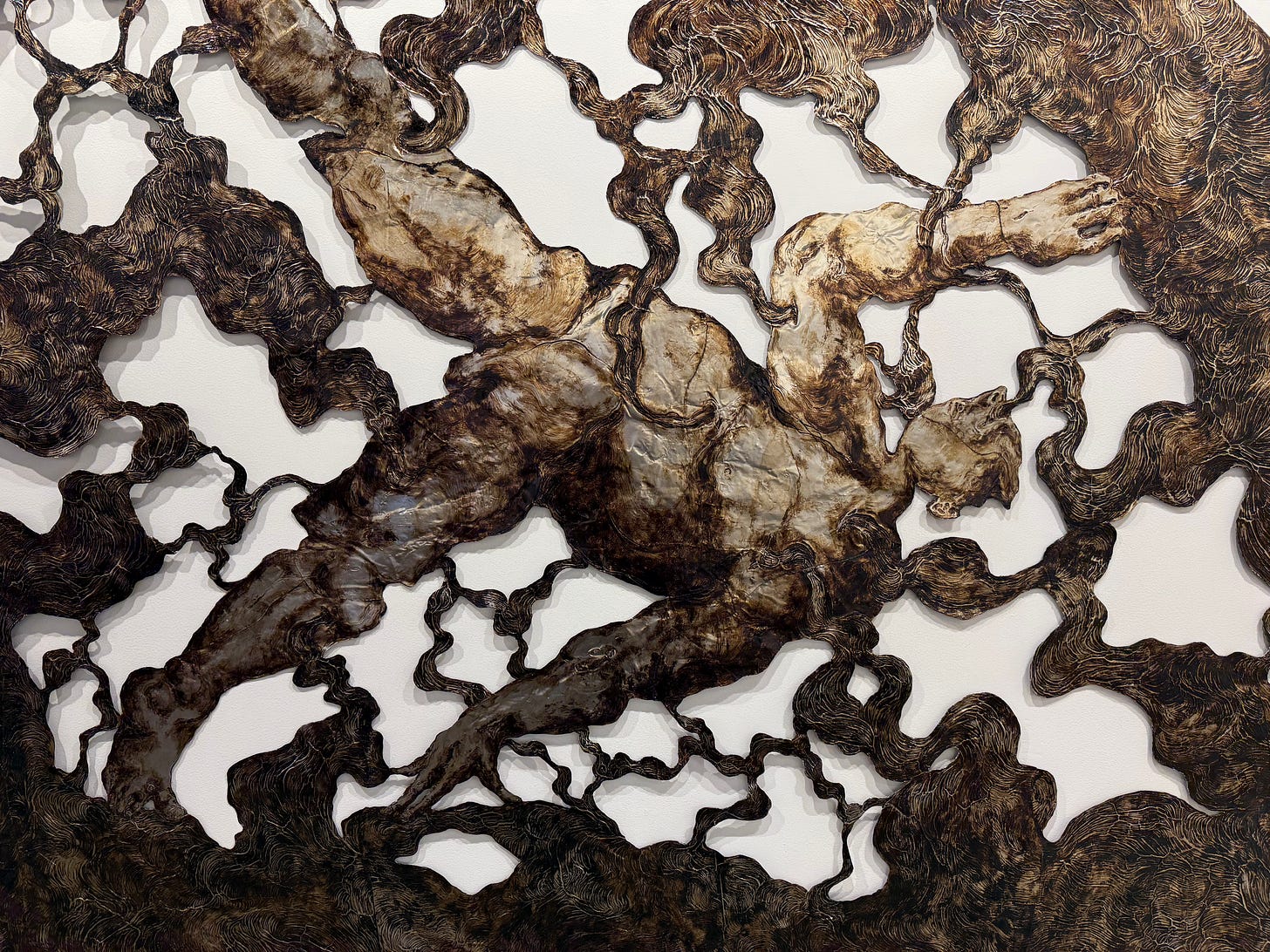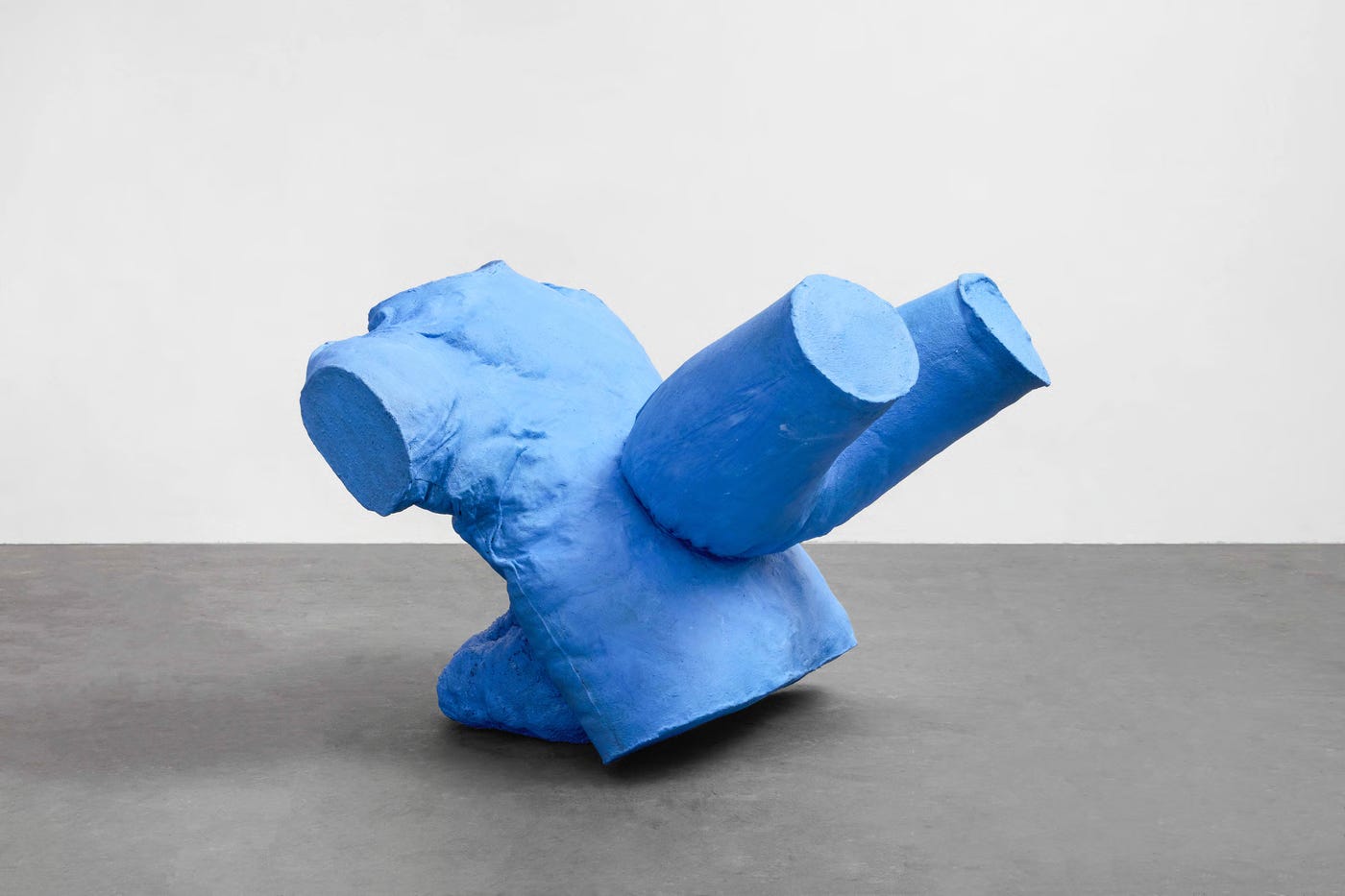São Paulo Dispatch #1
Selections from SP-Arte: Rotas
Bom tarde à todos! This week I’m coming to you live from São Paulo, where I’ve traveled to celebrate the 36th edition of the São Paulo Biennial, Not All Travellers Walk Roads – Of Humanity as Practice. This year’s edition is led by chief curator Prof. Dr. Bonaventure Soh Bejeng Ndikung, together with his conceptual team of co-curators Alya Sebti, Anna Roberta Goetz, and Thiago de Paula Souza, as well as co-curator at large Keyna Eleison and strategy and communication advisor Henriette Gallus.
While the exhibition doesn’t open to the public until September 6, there’s already a cornucopia of auxiliary happenings—exhibitions, fairs, performances, and countless opportunities—to glimpse the vast creativity unfolding across Latin America. Though Brazil looms large in the global cultural imagination, many here (and across the region) remain disparagingly impacted by distance from the art epicenters of the United States (read: New York) and Europe. The result is often a very you had to be there kind of deal. With that in mind, between cocktails, openings, dance floors, and dinners, it’s my intention to bring you along for the ride. I am fortunate to see much of the world, but few places have educated and inspired me like São Paulo.
As a primer: biennials are most easily described as the “Olympics of Art.” The model, established in Venice in 1895, was initially conceived to spotlight Italian artists with a biennial exhibition of Italian Art (Esposizione biennale artistica nazionale) marking the silver anniversary of King Umberto I and Margherita of Savoy. In the early 20th century, the event became increasingly international. By 1907, countries began installing national pavilions—the first being Belgium—which already hints at the Biennale’s complex, problematic history. (For context, Chanel even dedicated a season of the podcast CHANEL Connects to the Venice Biennale last year. I joined my beloved fellow critic Andrew Durbin for the season’s opening episode.)
A half-century later, in 1951, Italian-Brazilian industrialist Ciccillo Matarazzo spearheaded the creation of the São Paulo Biennial, hosted ever since in the pavilion that bears his name in Parque do Ibirapuera. More on that later. For now, here are a few highlights from my first two days of exploration—because, in true fashion, I went straight from the airport into the bustle of it all.
Stop 1: SP-Arte Rotas
Described as “an art fair that moves with the times,” SP-Arte functions as a vital meeting point for the artistic community, promoting exchange and strengthening the circulation of visual arts within Brazil while expanding to the international market—firmly situating Brazil in the global circuit. Rotas, one of two presentations of SP-Arte, launches in the days leading up to the Bienal and serves as a platform for connections, movement, and discovery. Featuring 60 curated projects, organized by the fair’s artistic director Rodrigo Moura, it is, in my humble opinion, one of the world’s cooler fairs.
Below are a few highlights that made the journey to ARCA worthwhile:
Galeria Marco Zero (Recife, Brazil)
Yehudi Hollander-Pappi (Sao Paulo, Brazil)
VERMELHO (Lison, Portugal)


Cristina Guerra Gallery (Lisboa, Portugal)



